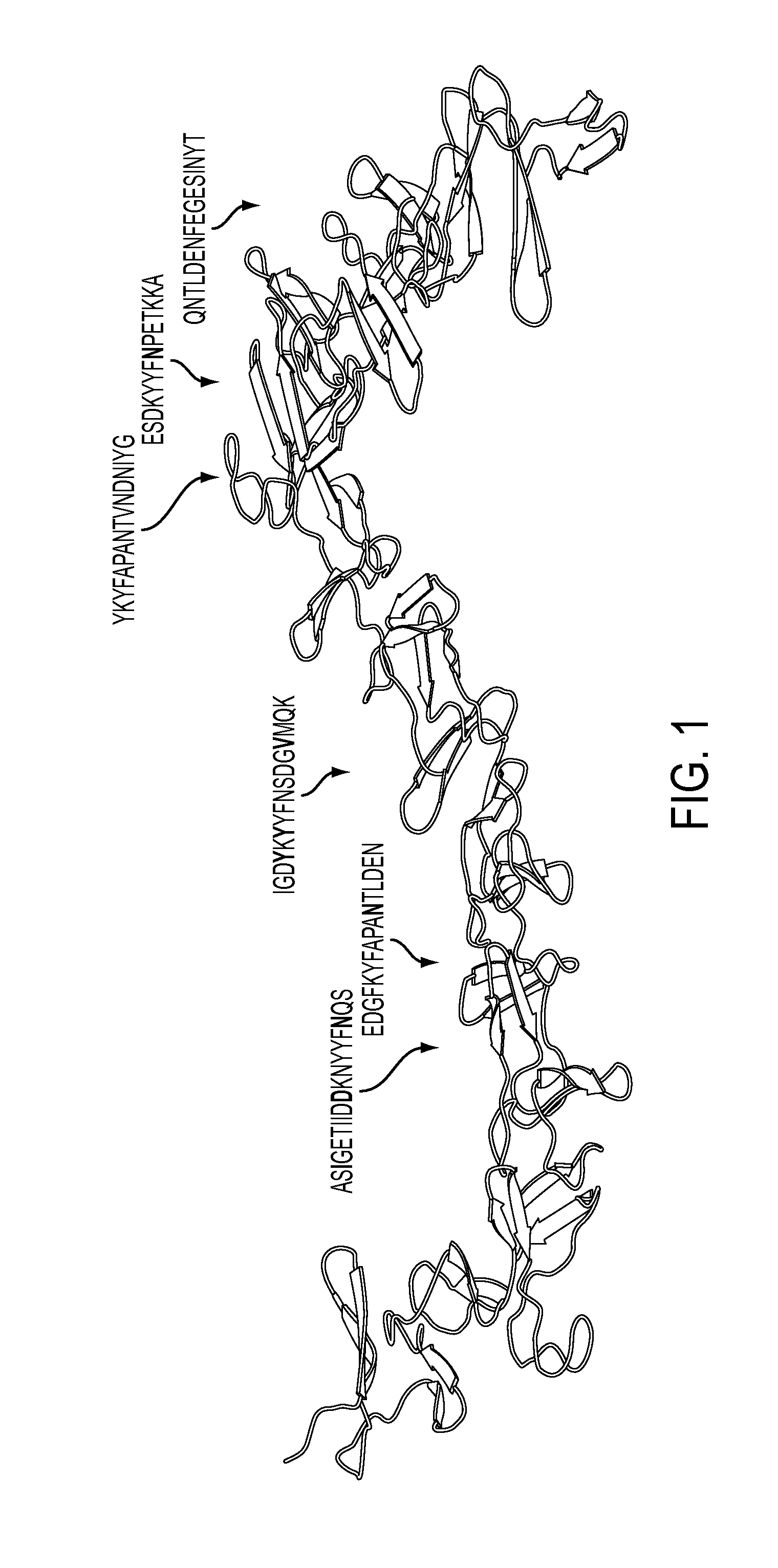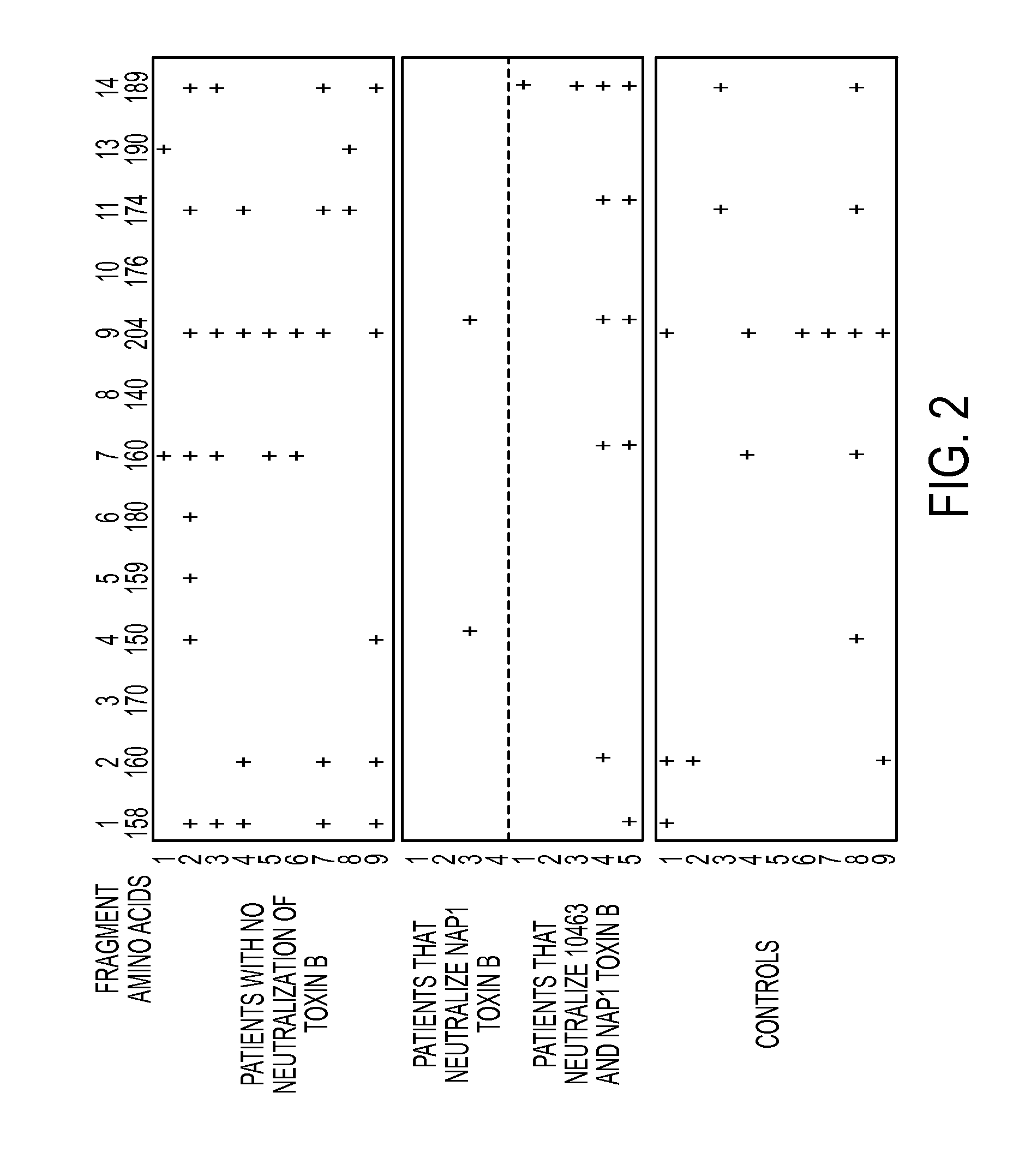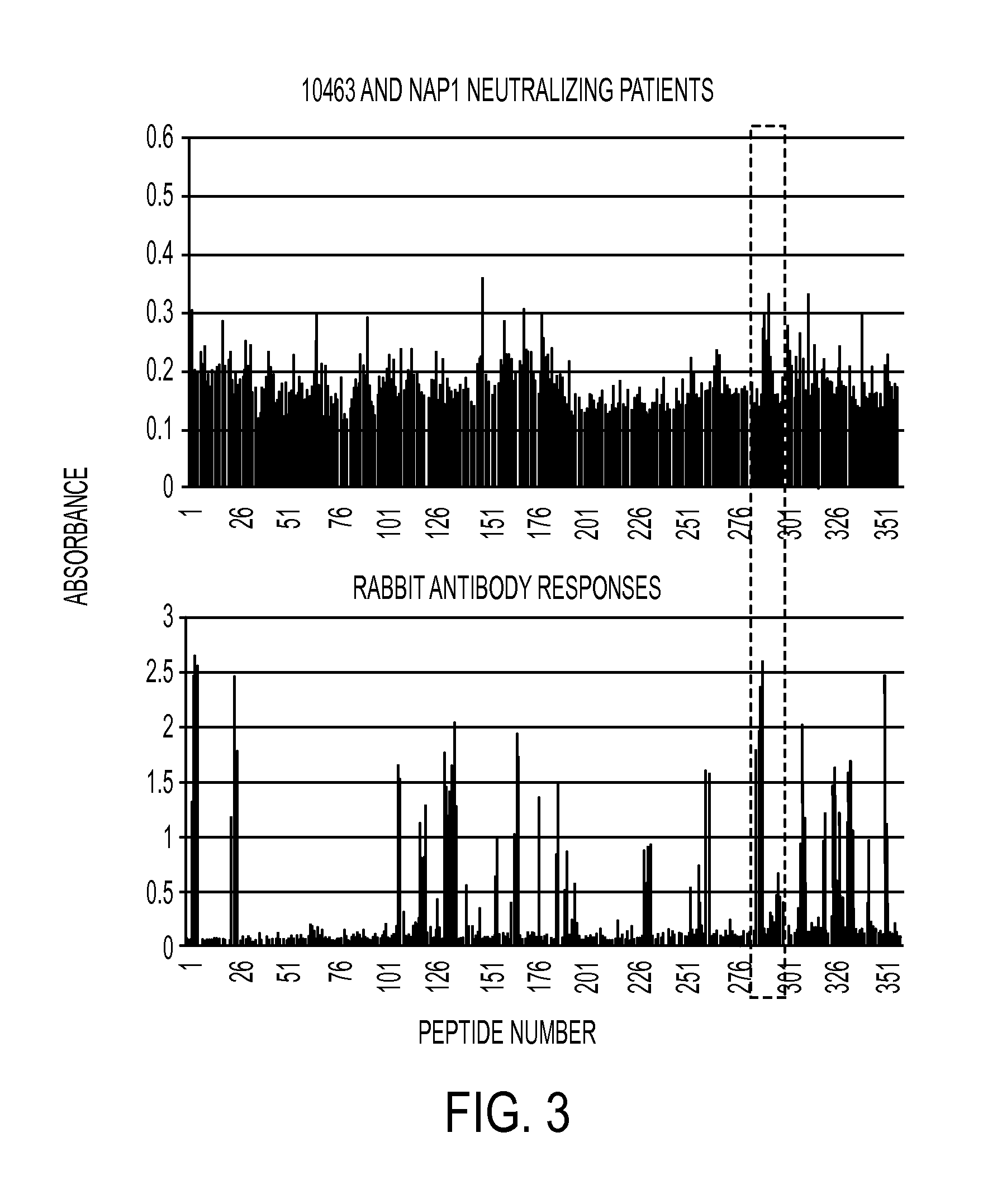Anti-c.difficile toxin antibodies and associated methods
a technology of anti-c.difficile toxin and antibodies, which is applied in the field of anti-c.difficile toxin antibodies and, can solve the problems of increased illness and more severe effects in patients, difficult to study human anti-toxin responses, and vaccines developed towards historical toxins may not protect against hypervirulent toxins
- Summary
- Abstract
- Description
- Claims
- Application Information
AI Technical Summary
Benefits of technology
Problems solved by technology
Method used
Image
Examples
Embodiment Construction
[0013]C. difficile is a gram-positive, spore forming, anaerobic bacterium. It is the leading cause of antibiotic-associated diarrhea, the severity of which ranges from mild diarrhea to life threatening pseudomembranous colitis. Pathogenic C. difficile strains excrete exotoxins A (TcdA) and B (TcdB) that have been intimately linked to its pathogenicity. Both TcdA and TcdB are enterotoxic, capable of inducing intestinal epithelial damage and increasing mucosal permeability, and hence are thought to be responsible for the pathogenesis of C. difficile-associated colitis. Several hospital outbreaks of CDAD, with high morbidity and mortality in the past few years in North America, have been attributed to the widespread use of broad-spectrum antibiotics. The emergence of more virulent C. difficile strains is also contributing to the increased incidence and severity of the disease. Antibiotic usage results in a reduction of commensal microflora in the gut, which permits C. difficile to prol...
PUM
 Login to View More
Login to View More Abstract
Description
Claims
Application Information
 Login to View More
Login to View More - R&D
- Intellectual Property
- Life Sciences
- Materials
- Tech Scout
- Unparalleled Data Quality
- Higher Quality Content
- 60% Fewer Hallucinations
Browse by: Latest US Patents, China's latest patents, Technical Efficacy Thesaurus, Application Domain, Technology Topic, Popular Technical Reports.
© 2025 PatSnap. All rights reserved.Legal|Privacy policy|Modern Slavery Act Transparency Statement|Sitemap|About US| Contact US: help@patsnap.com



